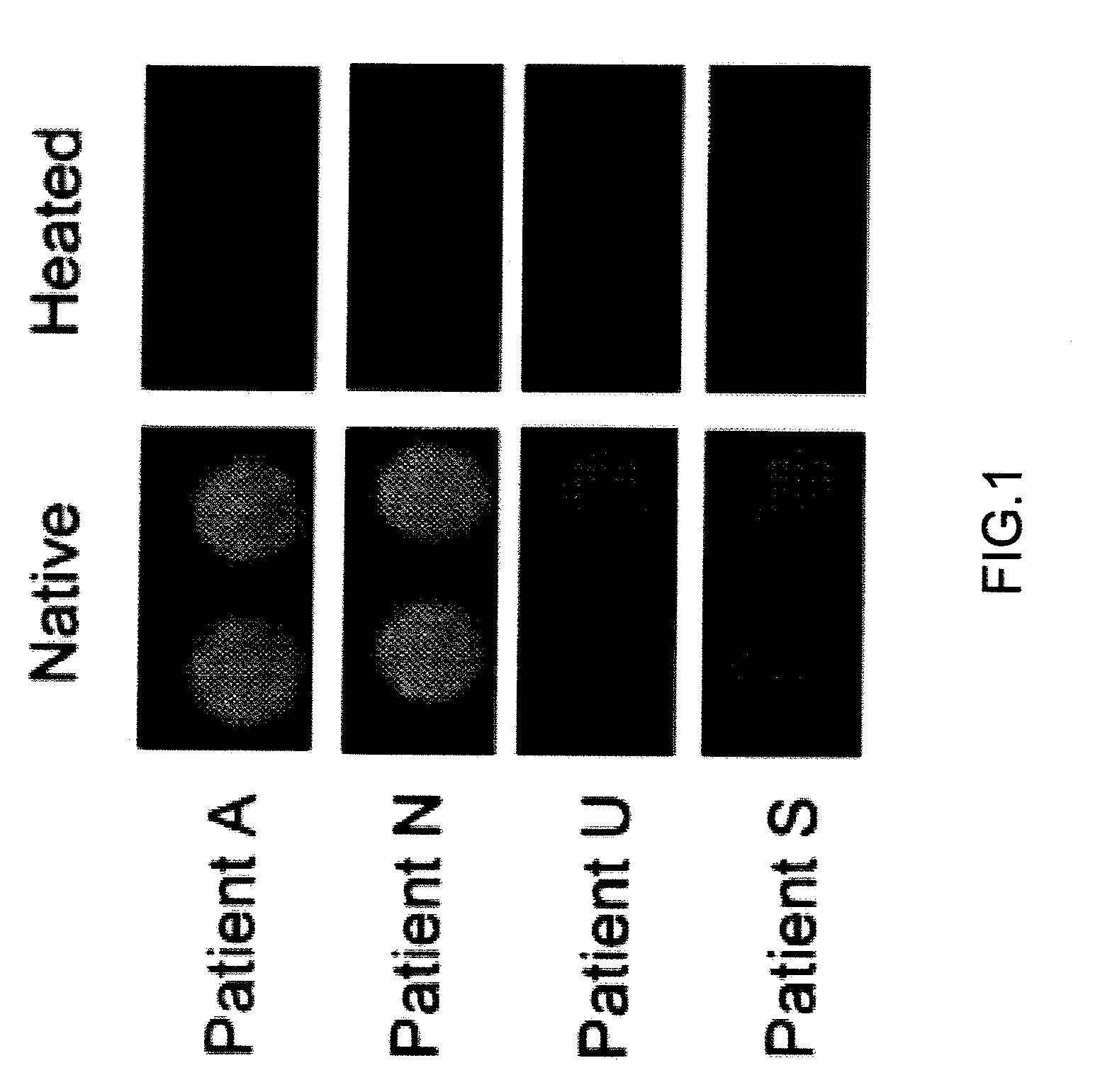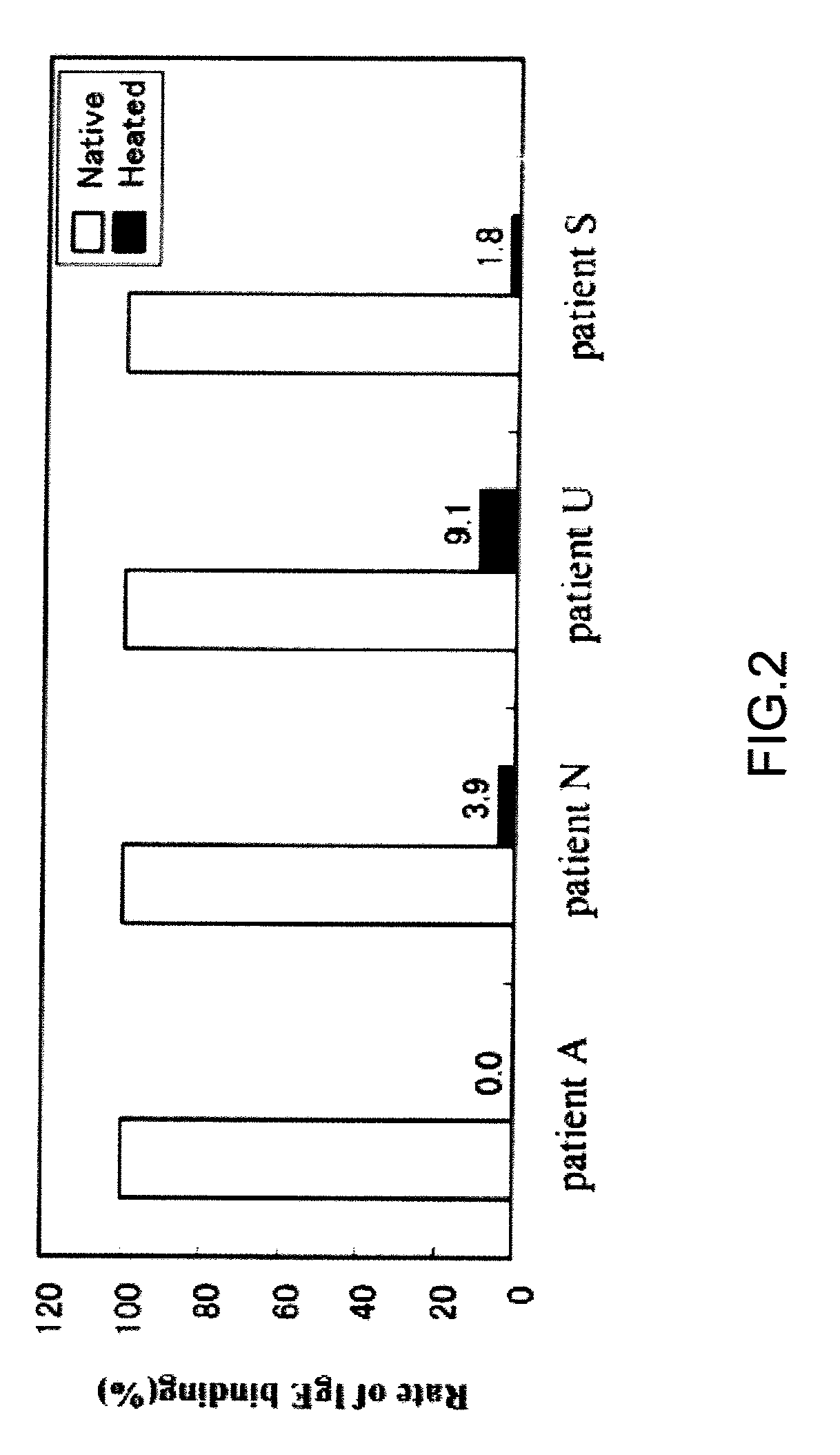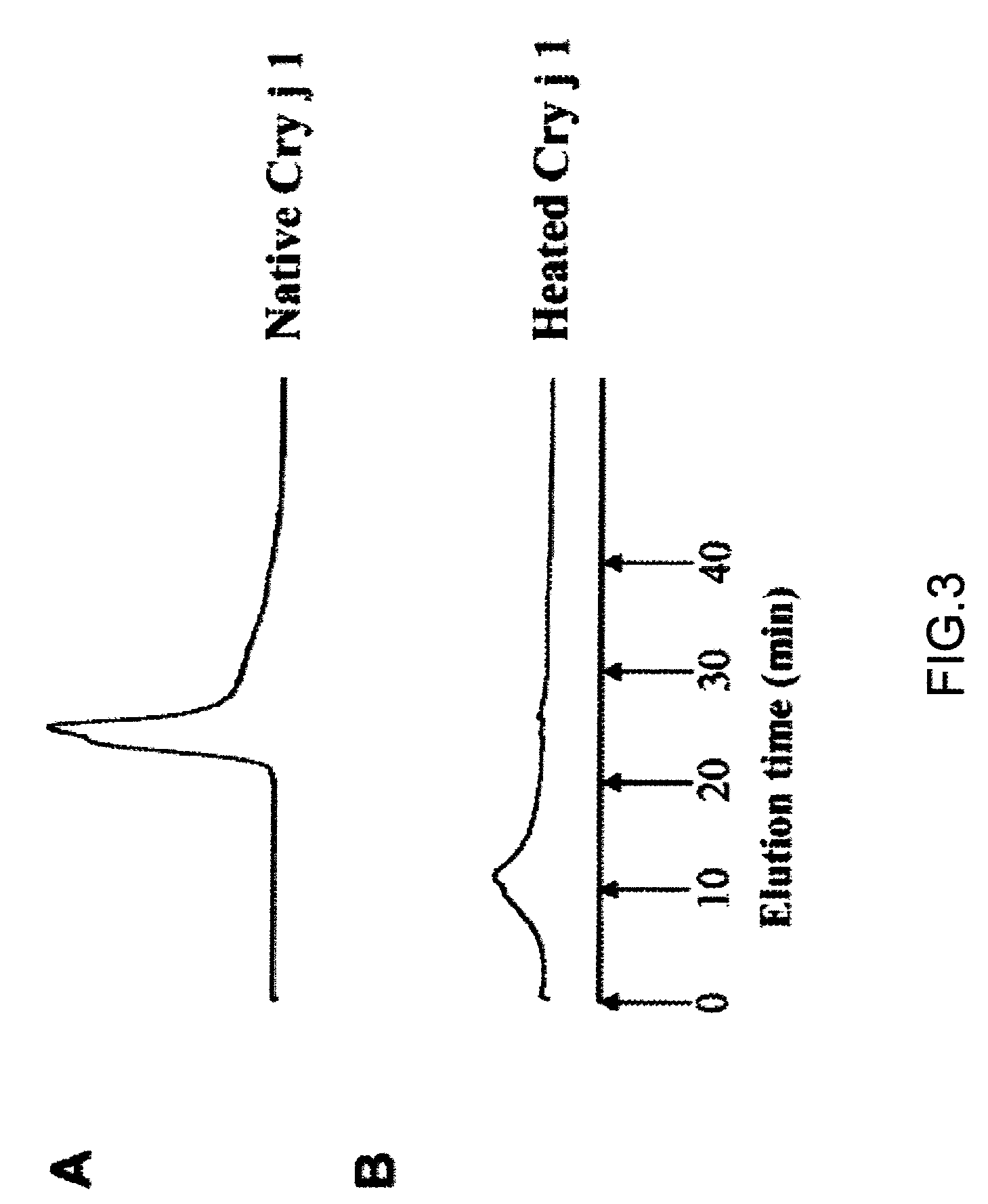Soluble aggregate, immune tolerance inducer and manufacturing method thereof
a technology of immune tolerance inducer and aggregate, which is applied in the direction of immunological disorders, antibody medical ingredients, drug compositions, etc., can solve the problems of no established effective therapy and severe social problems, and achieve the effect of reducing the antigenicity of allergen proteins
- Summary
- Abstract
- Description
- Claims
- Application Information
AI Technical Summary
Benefits of technology
Problems solved by technology
Method used
Image
Examples
examples
[0032]Binding between a thermally denatured Cry j 1 soluble aggregate and IgE was analyzed. The anti-sera of Japanese cedar pollen patients used were provided from the Dermatology Dept., Yamaguchi University Hospital (Dr. M. Muto).
[0033]Binding between Cry j 1 after heating (hereinafter, referred to as “heated Cry j 1”) and the IgE antibody of patient was analyzed by using the “dot blot” method. The dot blotting was carried out by using the biotin-avidin method. Native Cry j 1 (hereinafter, referred to as “unheated Cry j 1”) and the Cry j 1 heated at a programmed heating rate of 1° C. / min from 40° C. to 90° C. were diluted to 0.0005%, and 10 μL of each diluted solution of unheated or heated Cry j 1 was applied dropwise on a PVDF (polyvinylidene chloride) membrane. The PVDF membrane was previously cleaned by using methanol. IgE bound to Cry j 1 was detected by using the biotin-avidin reaction. After drying, the PVDF membrane was incubated with a blocking agent (0.5% BSA in PBS-Tween)...
other modified embodiment
[0047]The present invention is not limited to the embodiment above.
[0048]For example in the above embodiments, an immunological tolerance-inducing agent to Japanese cedar pollen allergen was described, but the agent is applicable to other vegetable and animal antigens such as Japanese cypress pollen allergen.
PUM
| Property | Measurement | Unit |
|---|---|---|
| pH | aaaaa | aaaaa |
| temperature | aaaaa | aaaaa |
| column size | aaaaa | aaaaa |
Abstract
Description
Claims
Application Information
 Login to View More
Login to View More - R&D Engineer
- R&D Manager
- IP Professional
- Industry Leading Data Capabilities
- Powerful AI technology
- Patent DNA Extraction
Browse by: Latest US Patents, China's latest patents, Technical Efficacy Thesaurus, Application Domain, Technology Topic, Popular Technical Reports.
© 2024 PatSnap. All rights reserved.Legal|Privacy policy|Modern Slavery Act Transparency Statement|Sitemap|About US| Contact US: help@patsnap.com










